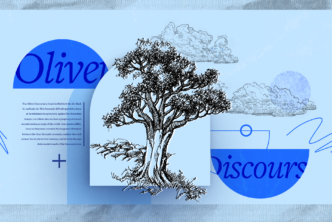The Christian faith is full of profound truths that defy human understanding. These grand mysteries point us to God’s greatness and goodness and, when contemplated, evoke awe and worship. At the center of our celebration of Easter are two of these mysteries: Jesus’ incarnation and resurrection. In this excerpt from The Majesty of Mystery, K. Scott Oliphint examines the relationship between these two mysteries to remind us of the glory and wonder of our God.
When we speak of two natures in Christ, we are not to think of the natures as equal “partners” that come together to compose the Person. Instead, we have to make an important distinction. We are to see the nature of deity as intrinsic and essential to the Person. In other words, Christ, as the Son of God, has always been, and cannot but be, fully God. Because he is the Son, he is God, whether or not he takes on a human nature. Of course, he decided he would humble himself and become man, but he did not have to do that. He did it as an act of free and unmerited grace and favor to man. But his deity is essential to who he is as the Son of God.
But his human nature, unlike his divine nature, is freely taken by him. He voluntarily decided to assume that nature so that we might be redeemed. The nature taken is not like his essential nature as God. It is taken at a point in history—“when the fullness of time had come” (Gal 4:4). His human nature, therefore, has a beginning point (though, once taken, it is taken for eternity). It is not, in that way, essential to who he is as Son.
There are significant and important differences, then, between the two natures in Christ. What is central in the incarnation is not the natures, but the Person. It is the Person of the Son, even while he remained fully and completely the Son of God, who took to himself a human nature in order to accomplish the salvation that we could not accomplish. The divine “nature” of the Son of God, therefore, is essential to who he is; the “nature” of man is who he is only because he freely decided he would take it.
The majesty and mystery of the gospel
This makes the truth and reality of the gospel all the more majestic and mysterious. Why would this One, who needed nothing, who had perfect fellowship with the Father and the Spirit, submit himself to utter humiliation, even to the point of being forsaken by his Father? The best answer we have from Scripture is simply because he loved us and so determined to do what we were unable to do—to break the chains of our sin in order that we might cheerfully serve and worship him for eternity.
The lesson of the incarnation is that only the Triune God could save us from ourselves. Man brought about his own ruin and the ruin of all of creation. This ruin was so deep and devastating that there was no way for human beings to solve the problem they had created; only God could do that. He had to do that, not by a simple wave of the hand or by a mere declaration. He had to do it by becoming one of us, even while he remained who he is.
We should never minimize the sufferings and trials of Jesus Christ. We should never think to ourselves, “Well, it’s easy enough to suffer and die when you’re God; who you really are remains unaffected. It’s only the humanity that suffers.” This would be to think wrongly about the reality of what the Son of God did. He really did become man. His sufferings and trials were just as real and painful and trying as are ours. He took his human nature for just that purpose.
The resurrection of Jesus modeled in the incarnation
But he conquered. He overcame it all. He resisted temptation and obeyed. He alone perfectly pleased his heavenly Father. So the One who was forsaken at the cross was exalted to the very throne of God and was declared to be, by virtue of his perfect obedience, the Lord of redemption who would bring his own to himself—the Son of God, who would bring many sons to glory (Heb 2:10). This is the model of majestic mystery that we see in the incarnation. It is the climax of covenantal condescension.
* * *
The Majesty of Mystery is available in print and digital formats. Read it and take up its challenge to worship our incomprehensible God.
Related posts
- 5 Suggestions for Observing Good Friday
- The Triumphal Entry: The Pathway to Glory
- Did Jesus Go to Hell after He Died?
- Some Say Easter Is Pagan: Is It Really?
- Is the Word ‘Easter’ in the Bible?
Related resources
- Mobile Ed: Jesus and the Resurrection Bundle (3 courses)
- Raised on the Third Day: Defending the Historicity of the Resurrection of Jesus
- Are You the One Who Is to Come? The Historical Jesus and the Messianic Question
- The Final Days of Jesus: The Most Important Week of the Most Important Person Who Ever Lived






